#16 in Vietnam
Cơm Chiên: Basic Information
Pronunciation
Alternative Name(s)
Dish Type
Course
Mealtime
Popular Cơm Chiên Variations
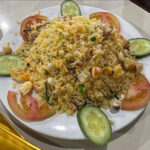
Cơm Chiên Cá Mặn
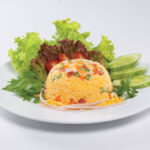
Cơm Chiên Dương Châu
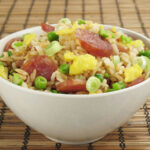
Cơm Chiên Lạp Xưởng
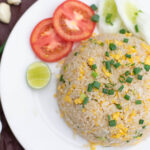
Cơm Chiên Trứng
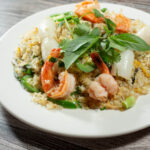
Cơm Chiên Hải Sản
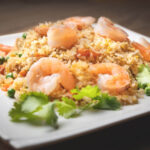
Cơm Chiên Tôm
Cơm Chiên: Ingredients and Preparation
Main Ingredients
Main Cooking Method
Preparation Process
Cơm Chiên: A Deep Dive
Cultural Significance
Taste
Texture
Aroma
Color
Serving Style
Serving Temperature
Accompaniment
Occasions
Seasons
Special Diets
Calories
Popularity
Popular Similar Dishes
- Chinese Fried Rice
- Thai Fried Rice
- Chahan
- Nasi Goreng
- Bokkeum-Bap
- Sinangag
Popular Dining Area
Cơm chiên, cơm rang or Vietnamese fried rice, is a Vietnamese culinary staple that consists of rice fried in a wok or pan, often mixed with a variety of ingredients such as eggs, vegetables, and meats like chicken, beef, seafood, or Chinese sausage.
It’s a versatile dish that can be customized with different add-ins and is known for its savory flavor, which can be enhanced with sauces like soy or fish sauce.
This dish is a reflection of the Vietnamese approach to cooking, which emphasizes fresh ingredients and balanced flavors, and it’s commonly enjoyed as a main course or as a side dish to complement other flavors.
I’ll guide you through the distinctive features of the dish, its well-known versions, advantages and disadvantages, and how Vietnamese fried rice stands up against its Chinese and Thai counterparts.
Additionally, I cover commonly asked questions and dishes that are akin to this one.
Key Points
Cơm Chiên Images
What Are Typical Ingredients in Vietnamese Fried Rice?
The main ingredients in cơm chiên in Vietnam are as follows:
| Ingredient Category | Description |
|---|---|
| Rice | Day-old cooked rice is preferred for its drier, firmer texture. |
| Protein | Diced Sausage: Adds a savory and occasionally smoky flavor to the dish. Stirred Eggs: Scrambled into the rice, providing richness and texture. |
| Seasonings | Soy Sauce or Fish Sauce: Imparts a salty, umami flavor characteristic of the dish. Onions: Adds sweetness and fragrance when fried.Other basic seasonings in Vietnamese cuisine: sugar, salt, and ground pepper. |
These staple components serve as the canvas for countless cơm chiên variations, each with its unique blend of textures and flavors.
What Are Popular Cơm Chiên Variations?
15 well-liked cơm chiên variations in Vietnam, their English name and characteristics are described below:
Each of these cơm chiên variations stands out with distinctive flavors and ingredients, presenting a balance of advantages and potential downsides.
Pros and Cons of Eating Cơm Chiên
Here’s a breakdown of the positive and negative aspects of eating cơm chiên:
Pros
Cons
How Does Vietnamese Fried Rice Compare to Chinese Fried Rice?
A comparative look at Vietnamese Fried Rice (Cơm Chiên/Cơm Rang) versus Chinese Fried Rice (Chǎofàn) reveals 7 interesting distinctions as below:
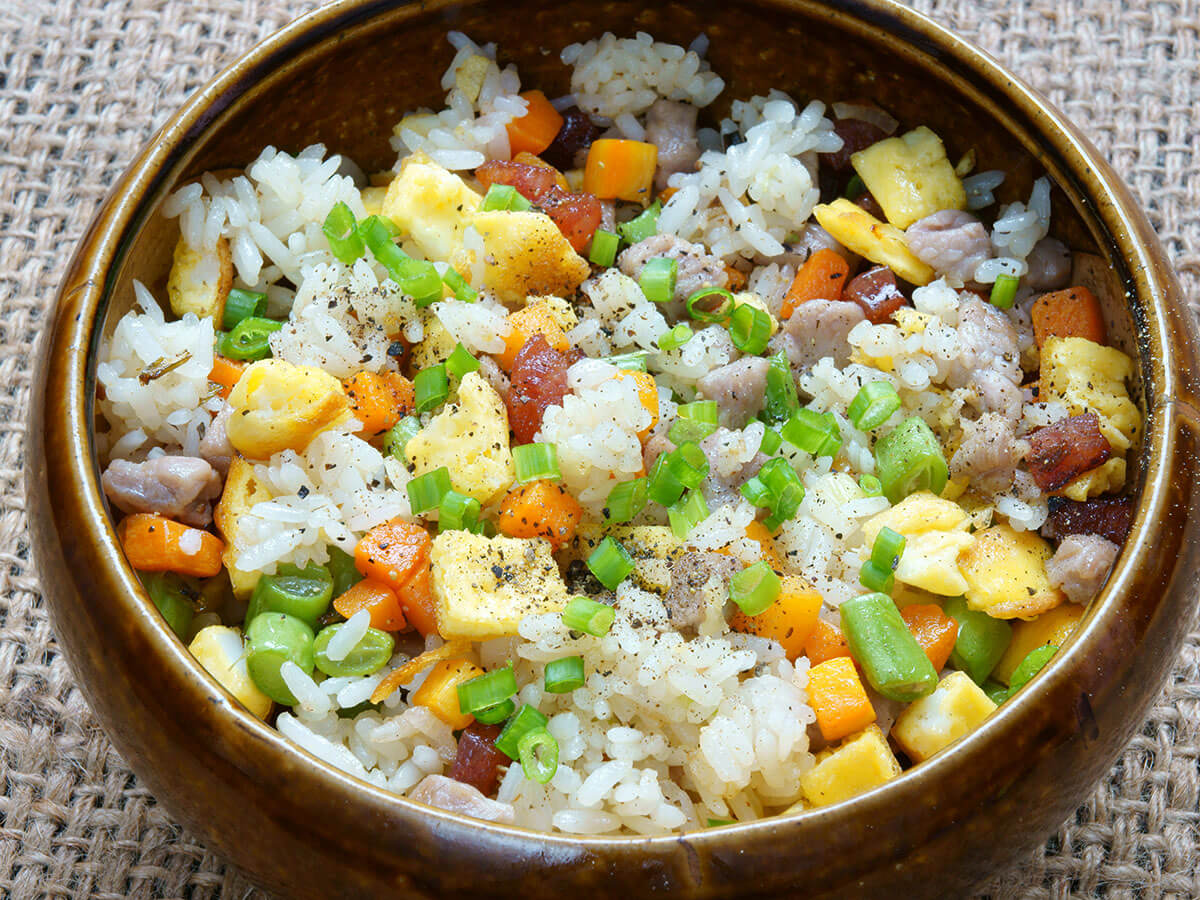
Vietnamese Fried Rice (Cơm Chiên/Cơm Rang)
Origin: Vietnam
Main Ingredients: Typically includes ingredients such as eggs, vegetables, and meats like chicken or shrimp.
Rice Type: Usually made with jasmine rice, which is less sticky and has a distinct aroma.
Flavoring: Seasoned with fish sauce, soy sauce, and sometimes sugar and chili sauce.
Texture: The rice is less oily and has a lighter texture.
Cooking Style: Less emphasis on the wok hei (the flavor imparted by a hot wok), focuses on fresh ingredients.
Accompaniments: Often served with additional garnishes like cucumber slices, tomato slices, lime, and fresh herbs.
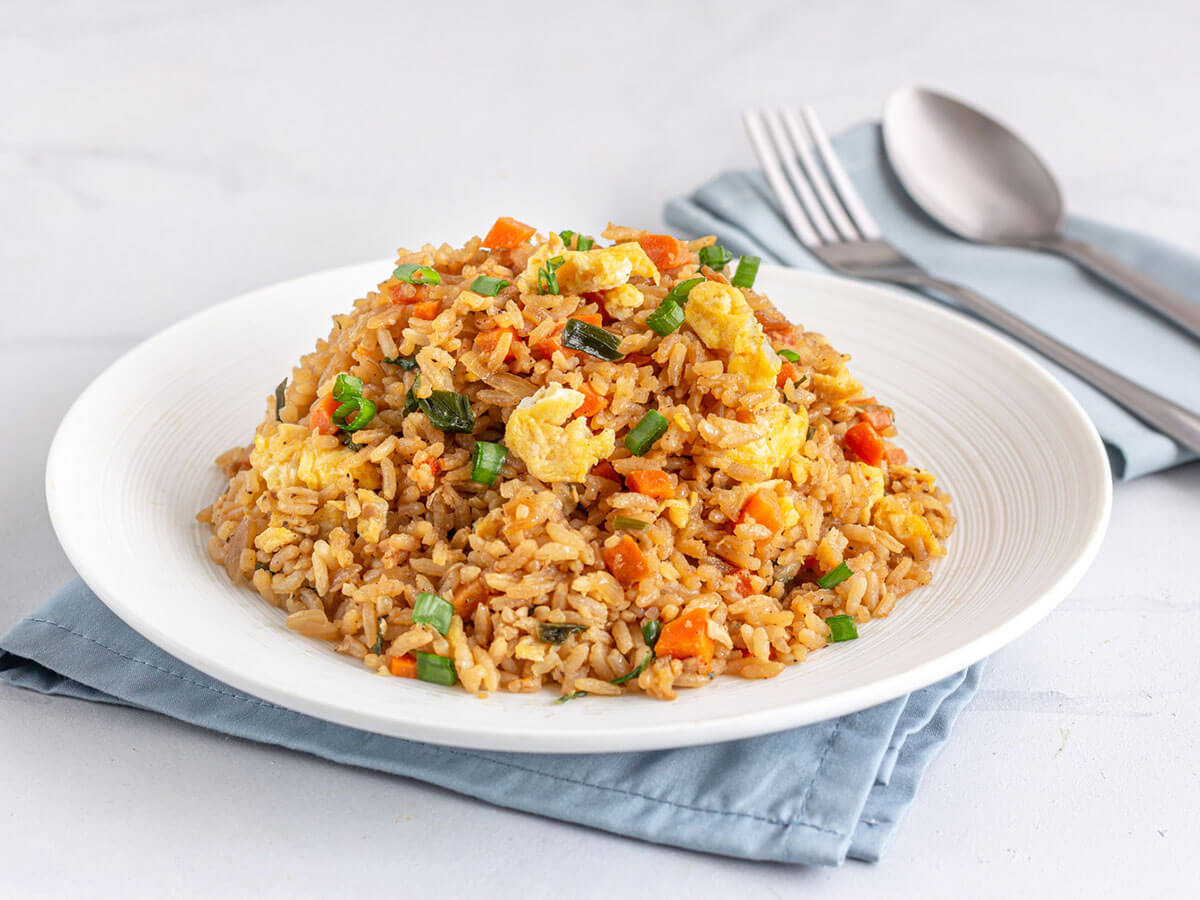
Chinese Fried Rice (Chǎofàn)
Origin: China
Main Ingredients: Often contains eggs, vegetables, seafood, or meat like chicken, beef, pork, and sometimes preserved meats.
Rice Type: Typically made with long-grain rice, which is less fragrant and more sticky.
Flavoring: Seasoned with soy sauce, oyster sauce, and various other sauces and spices.
Texture: The rice can be greasier and has a heavier texture due to more oil and sauces.
Cooking Style: Strong emphasis on wok hei, which is the smoky, charred flavor from a very hot wok.
Accompaniments: Usually garnished with scallions, sliced chili, and sometimes served with accompaniments like pickled vegetables.
While this analysis delves into the individual benefits and drawbacks of cơm chiên, it sets the stage for an intriguing Vietnamese fried rice vs. Chinese fried rice comparison, highlighting the unique cultural takes on a beloved culinary staple.
How Vietnamese Fried Rice Differs from Thai Fried Rice?
Let’s explore how Vietnamese fried rice is distinct from Thai fried rice:

Vietnamese Fried Rice (Cơm Chiên/Cơm Rang)
Origin: Vietnam
Rice Type: Typically long-grain rice
Common Proteins: Chicken, shrimp, crab, pork, eggs
Vegetables: Peas, carrots, corn
Seasonings: Soy sauce, salt, pepper
Garnishes: Green onions, cilantro
Flavor Profile: Savory with a balance of umami
Serving: Often with additional sides
Variations: May include additional meats or vegetables
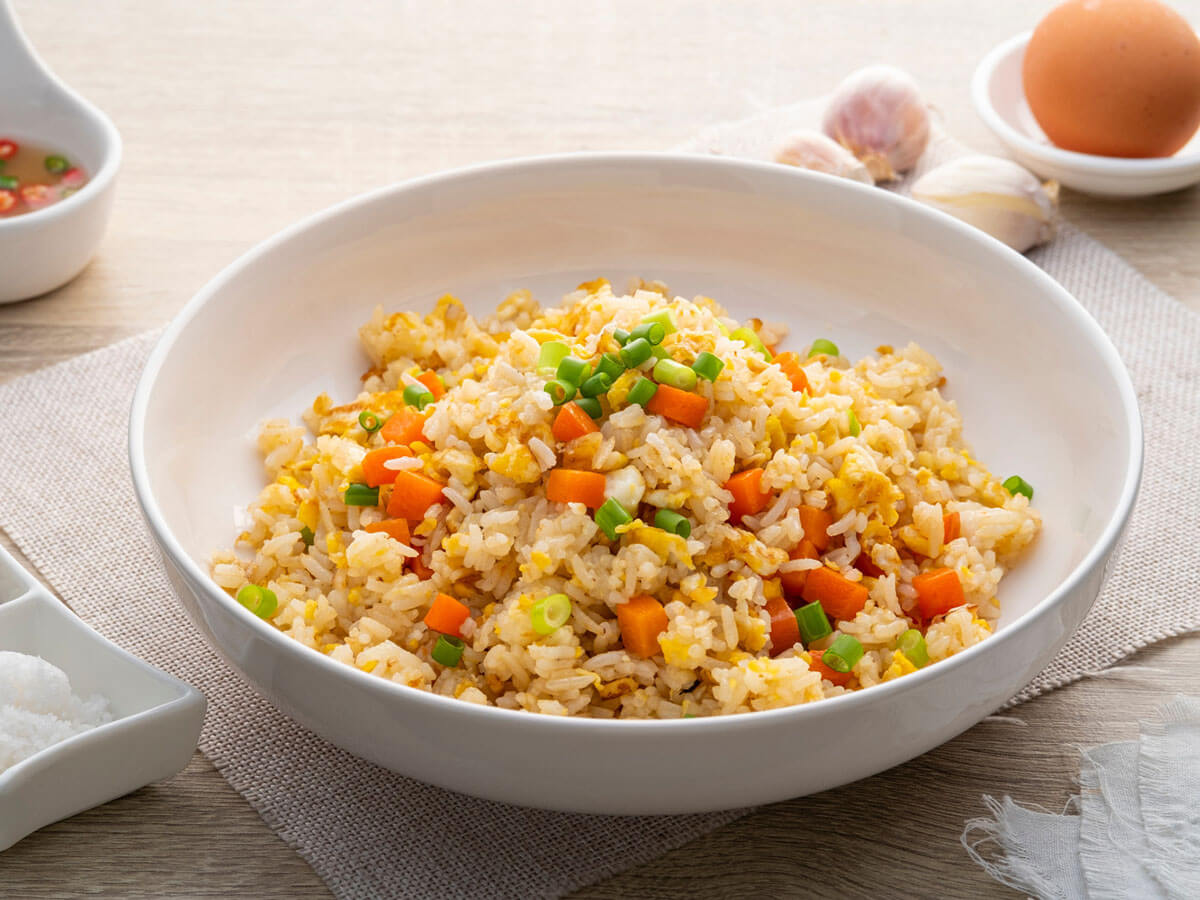
Chinese Fried Rice (Chǎofàn)
Origin: Central Thailand
Rice Type: Thai jasmine rice
Common Proteins: Chicken, shrimp, crab, eggs
Vegetables: Onions, garlic, sometimes tomatoes
Seasonings: Soy sauce, sugar, salt, chili sauce, fish sauce (nampla)
Garnishes: Cucumber, lime, tomato, green onion, coriander, prik nam pla (spicy sauce)
Flavor Profile: Savory with a balance of umami, sweetness, and a hint of fish sauce
Serving: Often served as a complete dish with garnishes
Variations: Many variants based on main ingredient or region
Plus, it’s worth noting the question that’s commonly raised when it comes to cơm chiên.



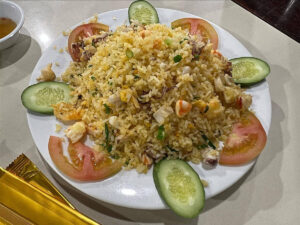
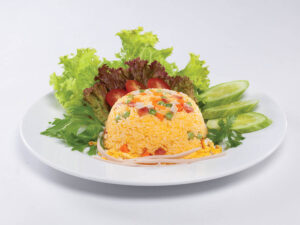
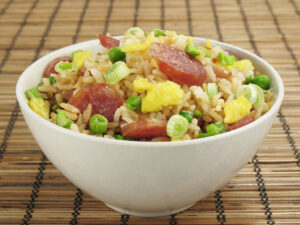
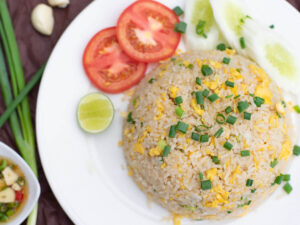
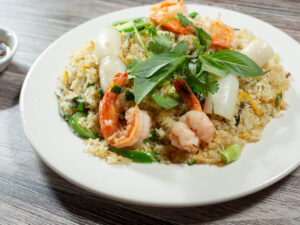
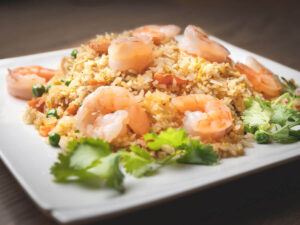
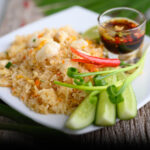
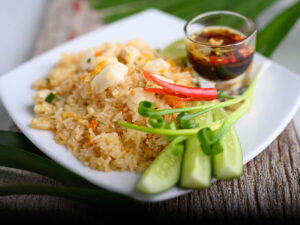
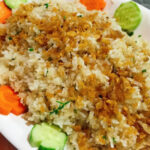
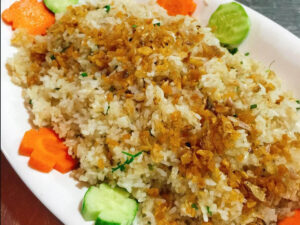
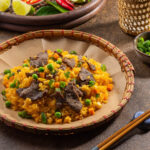
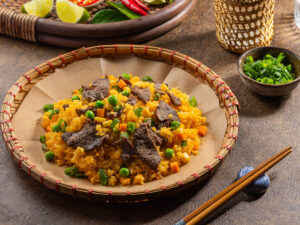
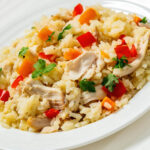
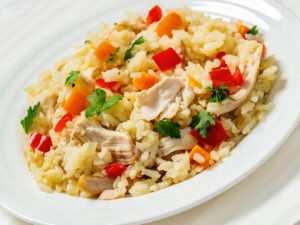
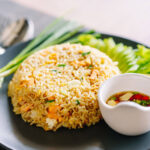
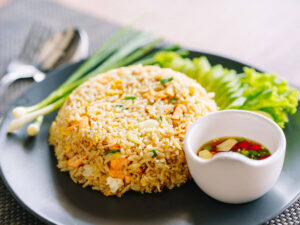
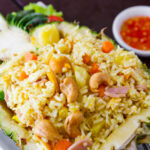
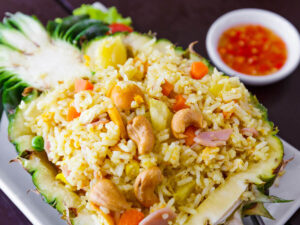
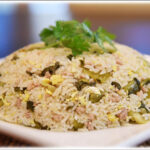
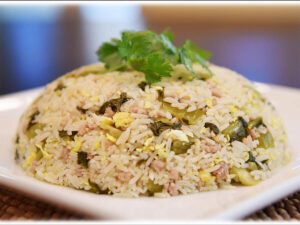
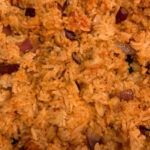
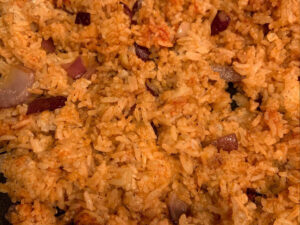
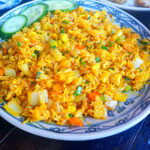
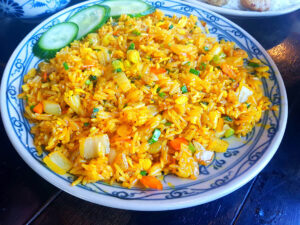
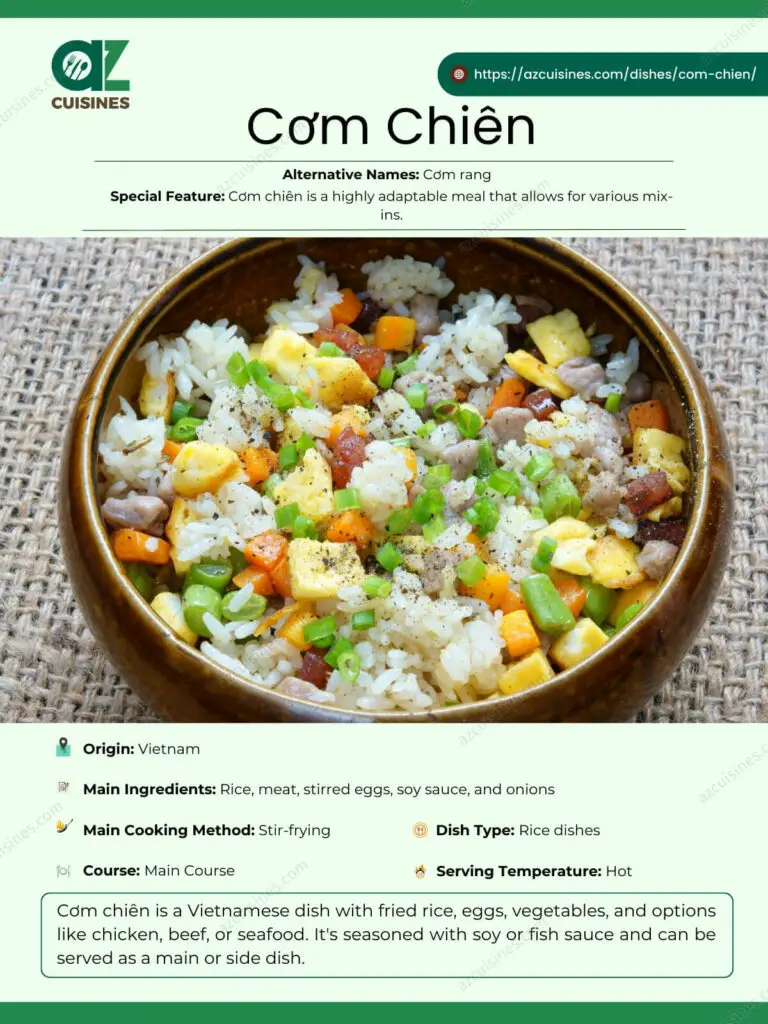
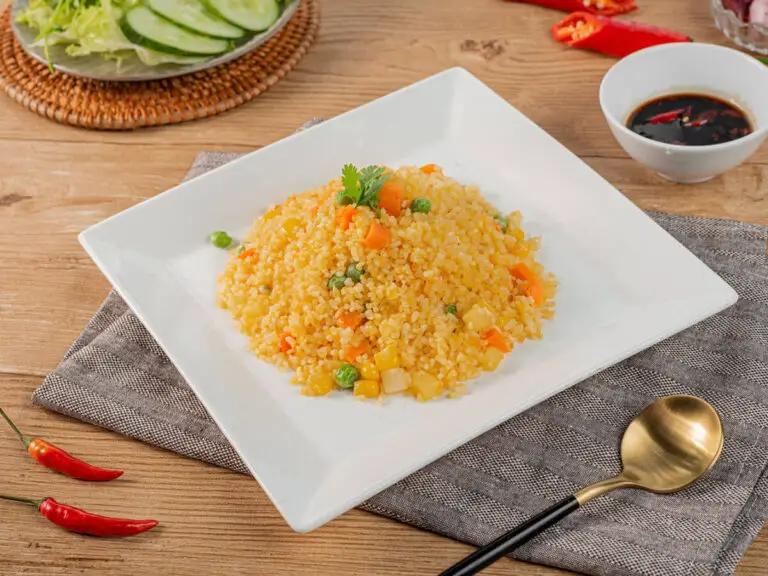
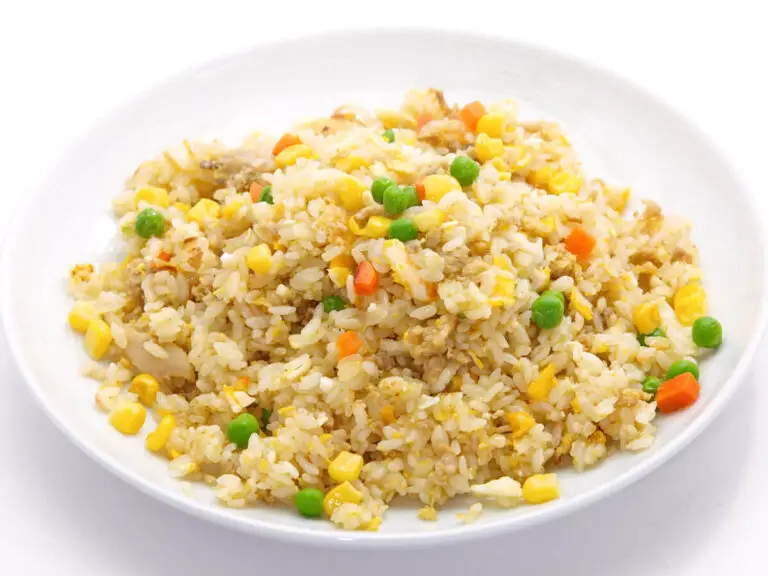
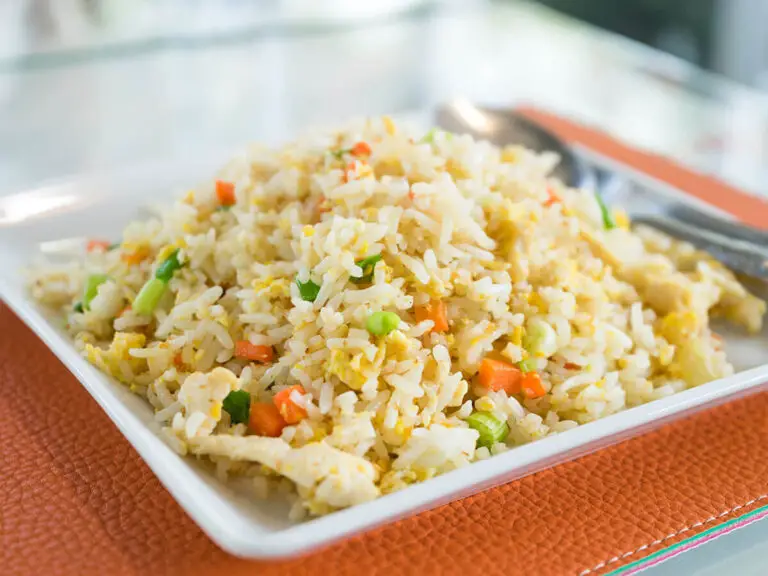
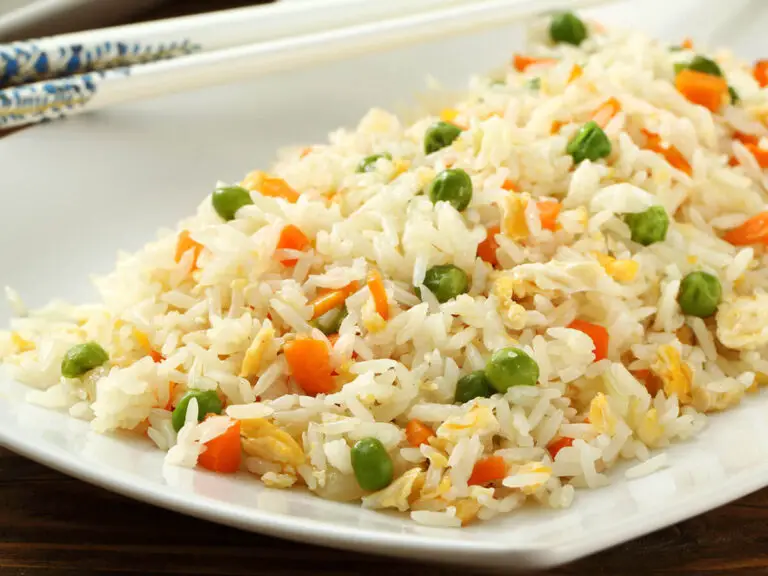
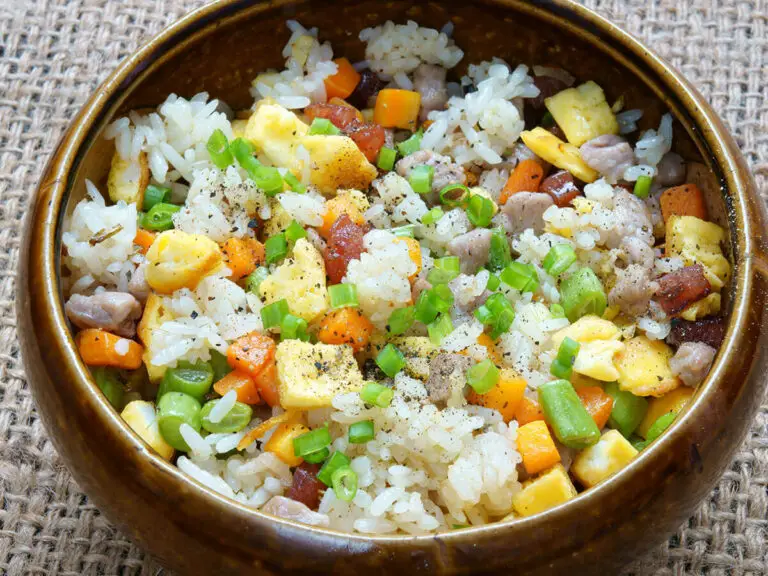
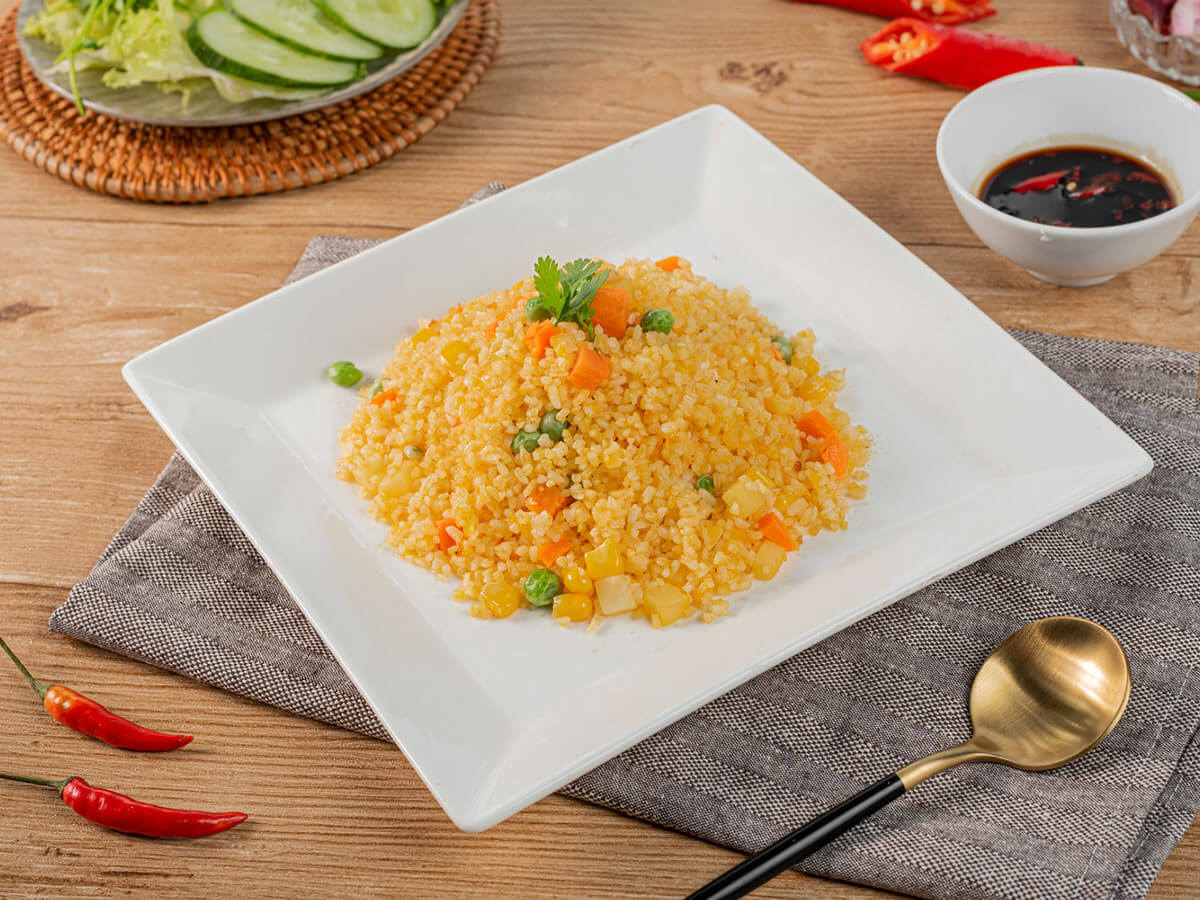
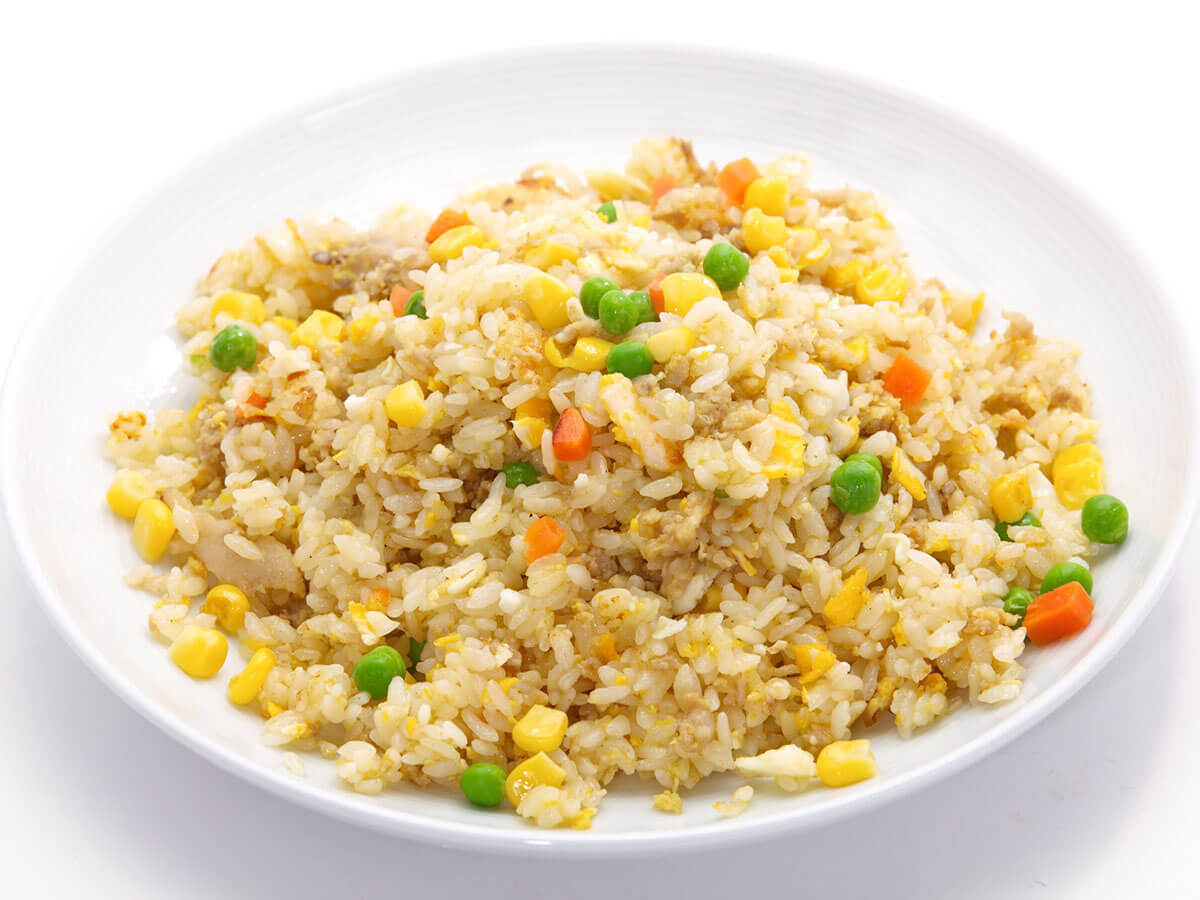
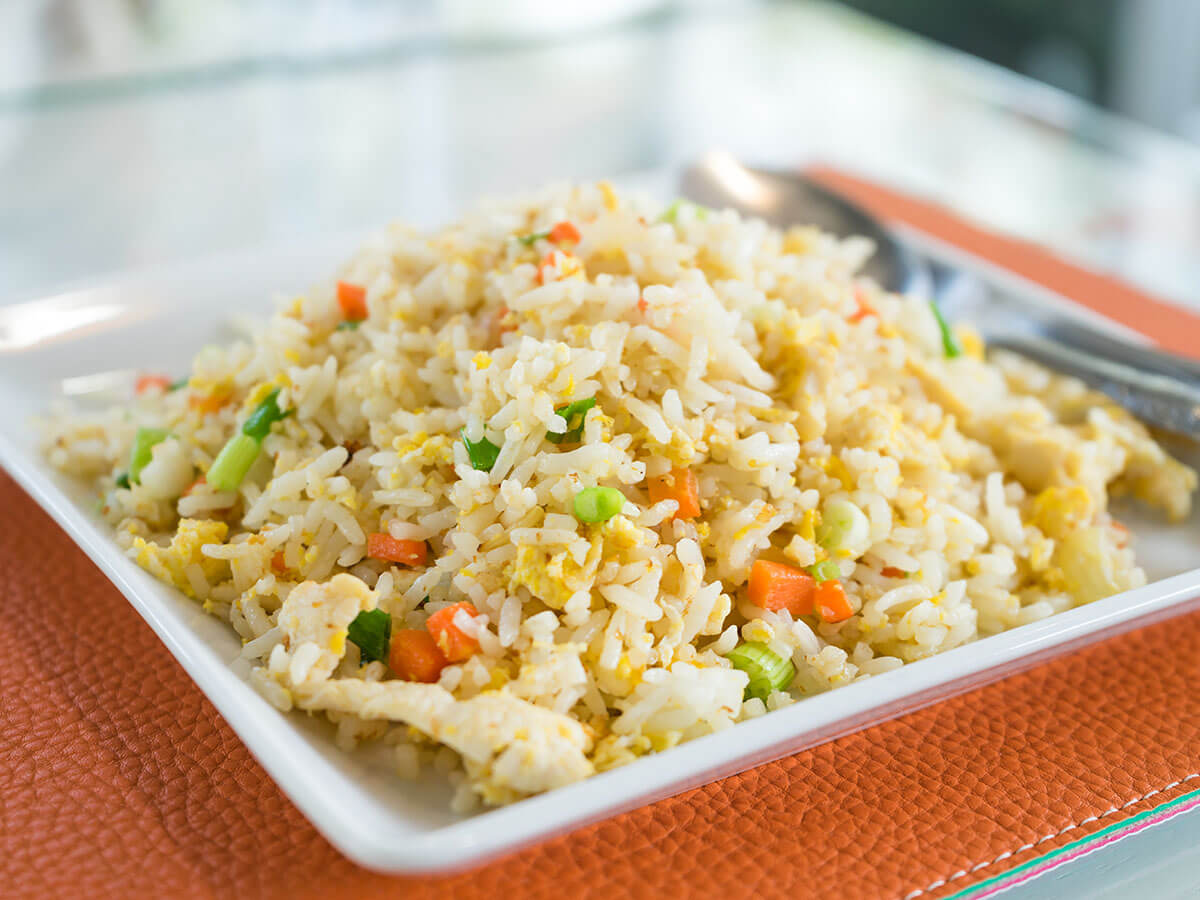
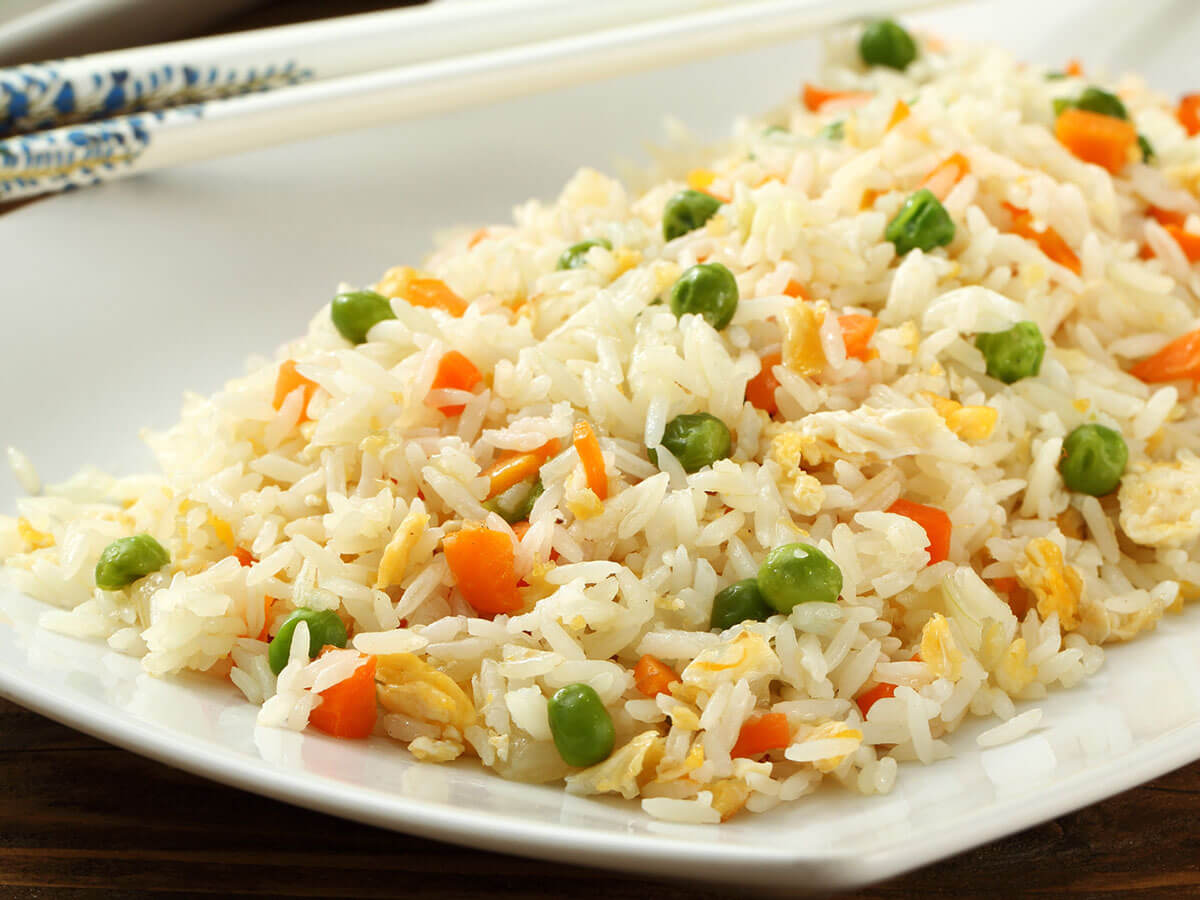
Truc Tran (Kris)
Senior Food Editor
Expertise
Home Cooking, Meal Planning, Recipe Development, Baking and Pastry, Food Editor, Cooking-video Maker, Vietnamese Food Evaluation Expert
Education
Truc Tran (Kris), an experienced food writer and editor, is great at exploring and describing global cuisines, from simple street food to fancy dining. In her writing, she skillfully mixes different flavors, cooking methods, and culinary traditions, showing the unique character of various cultures through their food and drinks. On azcuisines.com, Kris highlights her knowledge, especially in Asian cuisine and worldwide traditional dishes.